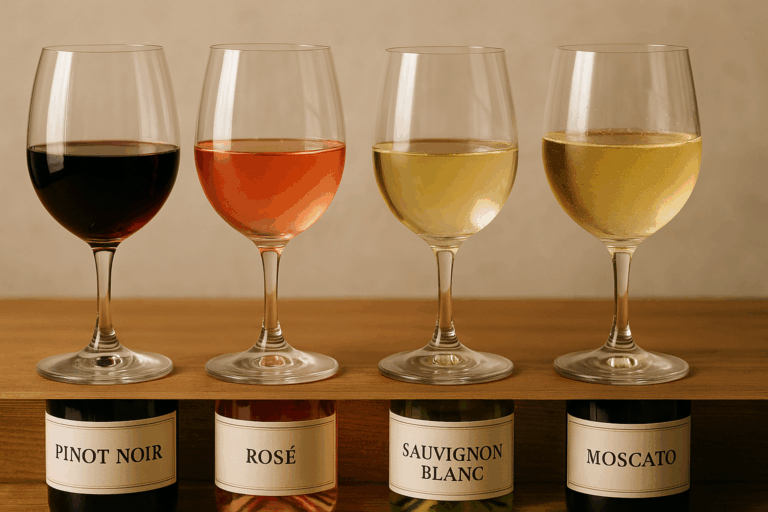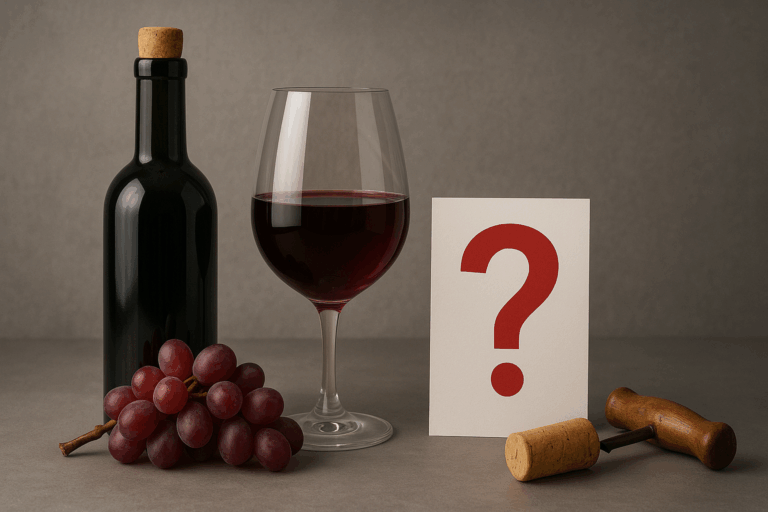Wine Storage 101: Keeping Your Bottles at Their Best
Buying a good bottle of wine is only the beginning how you store it can have a big impact on how it tastes later. Whether you’re keeping a bottle for a few days or several months, proper wine storage helps preserve flavor, aroma, and structure.
In this guide, you’ll learn the essentials of wine storage for beginners, including temperature, position, light, and common mistakes to avoid.
Why Wine Storage Matters
Wine is sensitive. Light, heat, vibration, and oxygen exposure can all change the quality of a bottle — sometimes ruining it completely.
Even if you’re not building a fancy wine cellar, following a few basic rules will ensure every bottle you open tastes the way it’s supposed to.
Rule #1: Keep Wine Cool (But Not Cold)
Temperature is the most important factor in wine storage.
Ideal wine storage temperature: 45°F to 65°F (7°C to 18°C)
The sweet spot is around 55°F (13°C).
- Too hot: Above 70°F (21°C), wine begins to age too quickly and lose flavor.
- Too cold: Regular refrigeration (under 40°F / 4°C) can mute flavors and dry out corks.
Avoid temperature fluctuations
Sudden changes in temperature can cause the wine to expand and contract, pushing the cork and allowing air in.
Tip: A wine fridge is a great investment if you want consistency.
Rule #2: Store Wine Horizontally (For Corked Bottles)
If your wine has a natural cork, it should be stored on its side. This keeps the cork moist, which prevents it from shrinking and letting air into the bottle.
If the wine has a screw cap or synthetic cork, horizontal storage isn’t necessary — but it’s still space-efficient.
Rule #3: Protect Wine From Light
Light, especially UV rays, can degrade wine and cause it to age prematurely. That’s why many bottles are made with dark glass.
Keep wine in a dark place:
- Avoid windows and direct sunlight
- Use low lighting in storage areas
- Avoid fluorescent lighting when possible
Tip: A closet, cupboard, or wine rack in a shaded area works great for short-term storage.
Rule #4: Minimize Vibration
Wine likes to rest. Constant movement can disturb the sediment (in older wines), accelerate chemical reactions, and negatively impact the flavor.
Avoid storing wine:
- On top of fridges or washing machines
- In high-traffic, shaky areas
- Near speakers or sound systems
Rule #5: Maintain Humidity (If Aging Wine)
For long-term storage (aging bottles for years), humidity is important to keep corks from drying out.
- Ideal range: 60–70% humidity
- Too dry = cracked corks and oxidation
- Too humid = mold risk
For short-term storage (under a year), this isn’t critical.
Tip: Use a small humidifier or store wine near a bowl of water if your air is too dry.
Short-Term vs Long-Term Storage
Short-Term (Under 1 Year)
- Store in a cool, dark cabinet or wine rack
- Avoid temperature swings and heat
- Horizontal position for corked bottles
Long-Term (Over 1 Year)
- Use a dedicated wine fridge or cellar
- Monitor humidity and temperature
- Choose wines that are meant to age (not all improve with time)
What About Opened Bottles?
Once opened, wine is exposed to oxygen, which starts the spoilage clock.
Storage tips for opened bottles:
- Red wine: Re-cork and store at room temperature, use within 2–3 days
- White/rosé wine: Re-cork and refrigerate, use within 3–5 days
- Sparkling wine: Use a champagne stopper and drink within 1–2 days
Bonus: Consider vacuum pumps or wine preservation systems to extend shelf life.
Best Places to Store Wine at Home
If you don’t have a cellar or wine fridge, here are beginner-friendly options:
- A cool closet or cabinet away from kitchen heat
- Under-bed storage bins (if temperature is stable)
- Basement or under-stairs area
- Wine racks in shaded corners
Avoid the kitchen, laundry room, or garage — they’re usually too warm and unstable.
Signs of Poorly Stored Wine
If you open a bottle and notice these signs, it may have been stored improperly:
- Leaking cork or wine stains on the neck
- Vinegar smell or cooked aromas
- Brownish color (especially in whites)
- Flat or muted taste
These indicate heat damage or oxidation.
Final Thoughts: Store Smart, Drink Better
Wine doesn’t need to be complicated, but it does need care. With just a little planning, you can keep your bottles tasting fresh and full of life — no matter your budget or experience.
So whether you’re saving a bottle for next weekend or a special anniversary, store it the right way — your taste buds will thank you.






